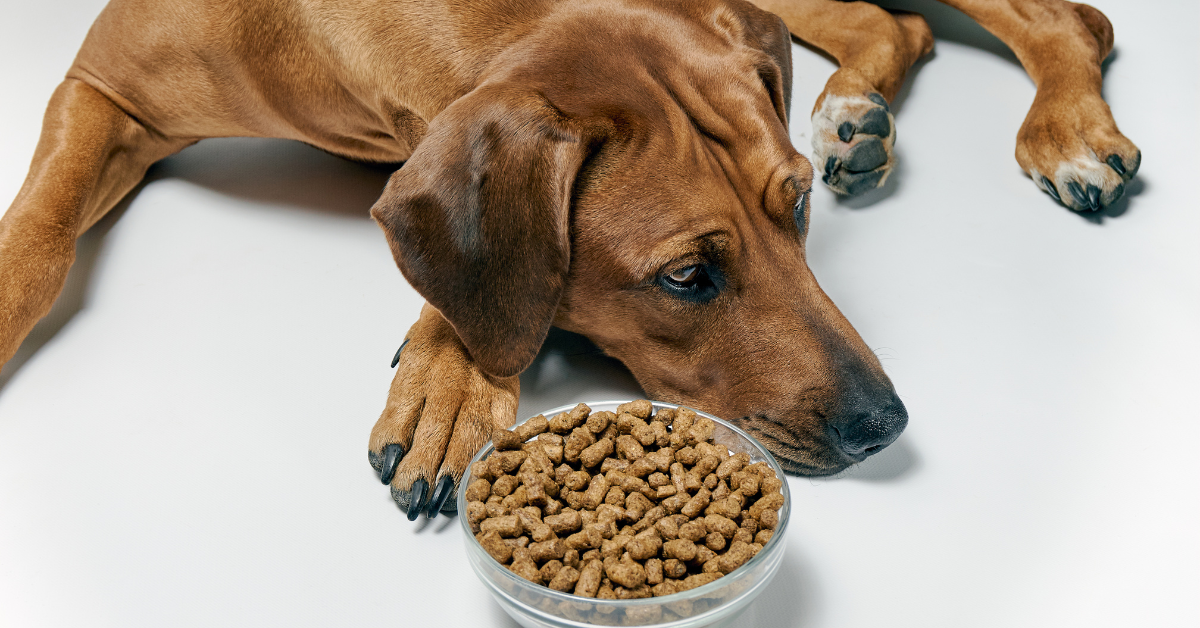The most challenging part for your pup is to get him to have medicines when he is ailing or suffering from a certain condition. Giving him the right medicine with the correct dosage is another mammoth task. So, if your dog has been suffering from regular bouts of osteoarthritis, the vet may have prescribed him Rimadyl. Right?
Well, before starting any new medication for your dog, the onus lies on you to do thorough research on the boons and banes of the same. Let’s take a look at what Rimadyl is, and get a vivid understanding of the common side effects associated with the medication. Read on to know more.
What is Rimadyl?
Rimadyl is a brand name used to refer to the drug carprofen, which belongs to the group of NSAIDs (non-steroidal anti-inflammatory drugs). The major use of this drug is to lessen inflammation, pain, and fever in canines. This makes it an effective medication for osteoarthritis in canines.
Rimadyl has anti-inflammatory properties, which help it to reduce inflammation and pain associated with osteoarthritis. It is even an analgesic and is used for lessening fever associated with osteoarthritis.
Vets often recommend Rimadyl in dogs for two main reasons. These include:
- To manage pain in dogs suffering from osteoarthritis
- For treating inflammation, and pain in dogs who have undergone surgery
Rimadyl is said to be effective on a short-term and long-term basis for dogs with osteoarthritis. It is considered safe than other NSAIDs like ibuprofen, aspirin, naproxen, etc. No wonder it is one of the most commonly prescribed painkillers by vets.
Common Side Effects of Rimadyl on Dogs

Every medicine comes with its set of side effects. Not all dogs react to a certain medication in the same way. While some may have side effects upon consuming a certain medication, others might not have any negative aftereffects.
Rimadyl is no exception in this regard. Especially when your dog is having it on a long-term basis, your dog could encounter a host of side effects. Most of them are related to the complications of the gastrointestinal tract. These include:
- Vomiting
- Ulcers
- Diarrhea
- Alteration in appetite
- Heightened or reduced thirst
- Tarry, bloody, or black stool
- Seizures
- Itchiness, redness, or scabs on the skin
- Changes in smell, color, or frequency of urination
- Yellowish skin, eyes, or gums
You should contact your vet immediately whenever you see any of these symptoms in your dog after he has had Rimadyl. Any delay in treatment may have serious repercussions on your dog.
Sometimes though rare, Rimadyl might lead to liver and kidney damage. The possibility is more in older dogs and those on long-term consumption of this medication. That’s why most vets recommend bloodwork for monitoring the kid`ney and liver, particularly in the case of long-term usage of Rimadyl.
Why is My Dog Acting Weird on Rimadyl?
Now, after you gave your dog Rimadyl did you see him acting weird? Perhaps he started behaving in a manner that he usually doesn’t. What did he do?
- Did your dog act lethargic or sleepy?
- Did you find your canine too tired or lethargic?
- Did he have trouble moving around and exhibit an uncoordinated gait?
- Was your dog less inclined to eat his food?
- Did you see him acting hyperactive, perhaps jumping all over the place or pacing up and down?
- Was he itching his skin a lot?
Before you ponder what went wrong, it is essential to know that all these could result from a side effect or reaction to Rimadyl. There may be several reasons for your dog’s system to react differently to Rimadyl.
- Your dog’s intake of Rimadyl may have exceeded the recommended dosage.
- Your canine could have a sensitive digestive system and could not digest the Rimadyl well.
- He may have developed symptoms after consuming Rimadyl for some time.
- He might also be on other medicines that reacted with Rimadyl, resulting in the side effects.
- You have a senior (who is more susceptible to the side effects of Rimadyl.
Recognizing Unusual Behavior in Dogs on Rimadyl

As a pet owner, you are responsible for monitoring your dog closely after giving him the first dose of Rimadyl. It would help if you even kept a close eye on him throughout the period he is on Rimadyl. It could be that he was initially fine upon having the medication but went on to show symptoms after continuous consumption of Rimadyl.
Check out the following red flags. When you identify that things are not how they should be, contact the vet immediately. The slightest delay could aggravate your dog’s symptoms and make things worse.
Be prompt in recognizing the symptoms mentioned below. Act quickly to save your dog from a serious health hazard.
- Your dog doesn’t show interest in eating and mostly refuses his food
- You see changes in your dog’s behavior. He is behaving aggressively or seems to display hyperactivity. He may even be sluggish or lethargic.
- Your dog is vomiting, and you may notice blood in his stool
- He has diarrhea, or his stool appears black or tarry.
- Your canine is either drinking a lot of water or not having any water.
These are just a few of the many symptoms your canine could display. Dogs vary from one another in the symptoms they show. So any signs of discomfort in your dog after having Rimadyl call for a vet’s consultation.
What to Do if Your Dog is Acting Weird on Rimadyl?

Whenever your dog is acting weird on Rimadyl, the first thing you should do from your end is get in touch with the vet immediately. When you call the vet or take your dog to the vet, ensure you have the following details. These include:
- Your dog’s size and weight
- Since when is your dog on Rimadyl
- The symptoms that he is showing and the severity
- If he has any underlying condition or not
All of these would help your vet to start treatment at the earliest. Another thing you must also do is to stop giving Rimadyl right from the time you see him acting weirdly. Do not resume it till your vet tells you to do the same.
Preventive Measures and Precautions
If your dog has reacted to Rimadyl, there are certain preventive and precautionary measures to take from your end. It will help relieve your dog and save him from serious health hazards. Here are some of the things you can do from your side to ward off any unpleasant consequences:
- Follow the recommended dosage as given by your vet. Make sure that you do not exceed the amount prescribed by the doctor.
- Let the vet know if your dog has any underlying condition or is on any other medications. In this way, it will help the vet determine if he should give the medicine to your dog.
- Keep the packet or bottle of Rimadyl in a safe place, like a locker or cabinet far from your dog’s reach. He then won’t accidentally ingest the medicine.
- Watch your dog closely; if you identify any change in his symptoms, do not delay consulting the vet.
FAQ’s
What are the alternatives to Rimadyl?
Many vets have spoken about Rimadyl being one of the safest and most effective options for providing relief against pain and inflammation. Yet, if your dog faces problems with ingesting Rimadyl, you may speak to your vet and discuss the alternatives. It might be another painkiller that could be a better substitute for Rimadyl.
Suppose your dog has a recurring problem with arthritis. In that case, alternative therapies like massage, acupuncture, or water therapy will help in the long run. Chiropractic therapy is another effective method. It helps stimulate endorphins, hormones released when your body is stressed or in pain. In this way, it lessens the need for pain-relieving drugs.
Which medicines can interact with Rimadyl?
Rimadyl shouldn’t be used with other medications that have an anti-inflammatory effect. It should also not be used with medicines to treat heart ailments and blood pressure.
Can dogs become hyperactive on eating Rimadyl?
There isn’t any evidence to show that Rimadyl triggers hyperactivity in canines. Yet, if you notice aggressiveness, hyperactivity, restlessness, or any other symptoms in your dog, do not delay contacting the vet.
What forms is Rimadyl available in?
You could get Rimadyl in three distinct forms. They include chewable tablets, caplets, and injections. Also, you shouldn’t give your dog Rimadyl if your dog has a bleeding disorder. How safe Rimadyl is for dogs below six weeks, lactating dogs, or pregnant dogs is still under research.
Can Rimadyl kill a dog?
It is not always the case. But, if your dog has had an overdose of Rimadyl or is already suffering from bleeding disorders, then the medicine could produce harmful effects on him. It may also be fatal if immediate action isn’t taken.
How long will Rimadyl remain in your dog’s system?
Rimadyl has a half-life of around eight hours. That means half of the medicine will take approximately eight hours to get removed from your dog’s body. However, the entire medicine could take a few days to leave your dog’s system.
Can Rimadyl be given to dogs on an empty stomach?
No. Giving Rimadyl to dogs as a part of their meal or when they have completed their meal is always advisable. This way, it will help to lessen the risks of gastrointestinal ailments in dogs.
Conclusion
To summarize, Rimadyl is mostly safe for your canine, especially if you follow the right dosage. Every medicine comes with side effects, and Rimadyl isn’t an exception in this regard. However, when your dog has chronic osteoarthritis, you should also think of other alternatives to relieve him. Firstly managing your dog’s weight is of utmost importance. For this, you should take proper care of his diet. You should also arrange for proper bedding to give your dog maximum comfort.
Elena Gherman is a highly skilled and knowledgeable animal care expert. At the start of her career, she gained practical expertise with multiple animals. In addition to that, she works as a DVM veterinary editor for Joy Pet Products, which focuses on offering reliable information on pet health and wellbeing. She meticulously reviews each piece of writing before it is published to make sure pet owners get the most precise and updated information possible.
